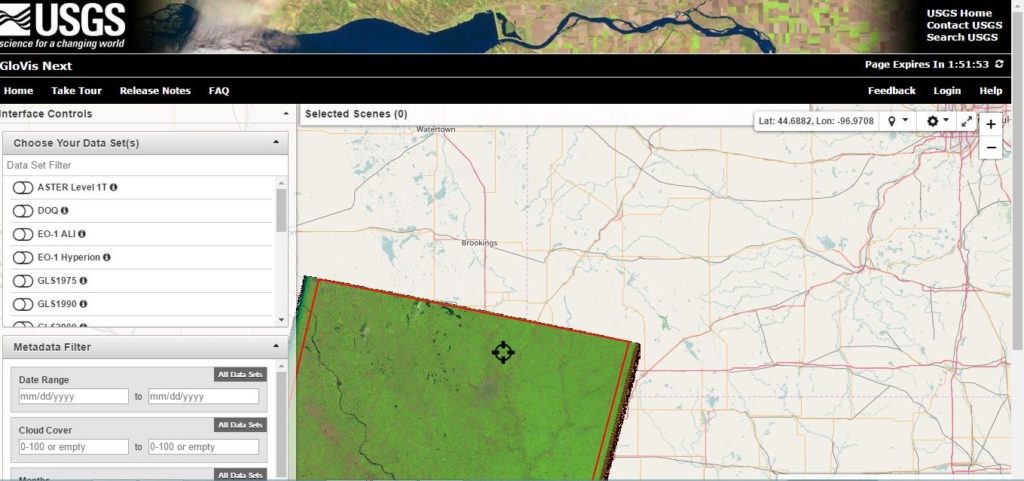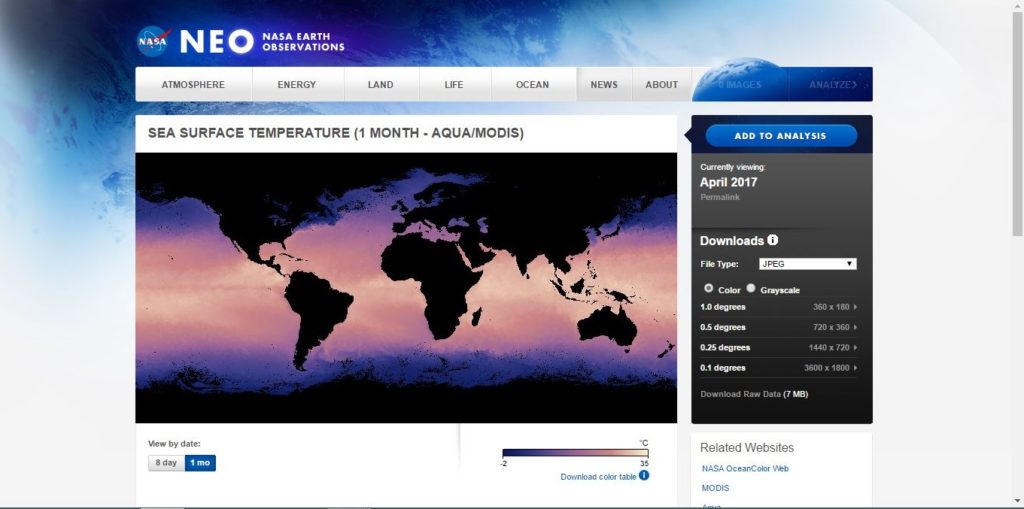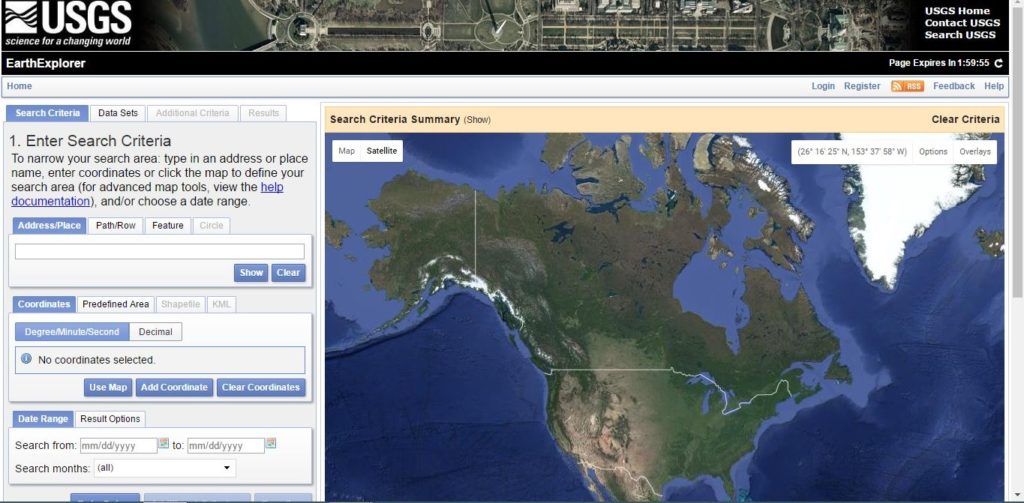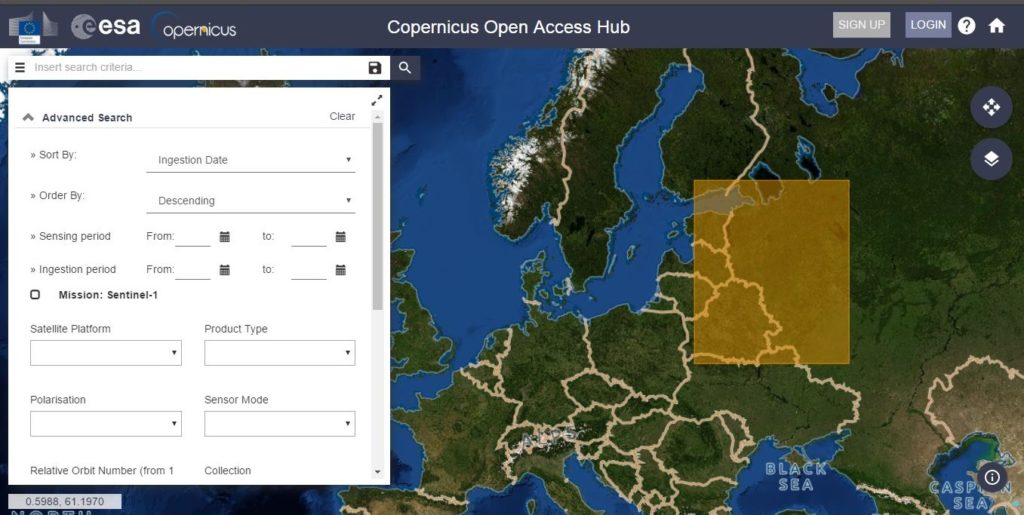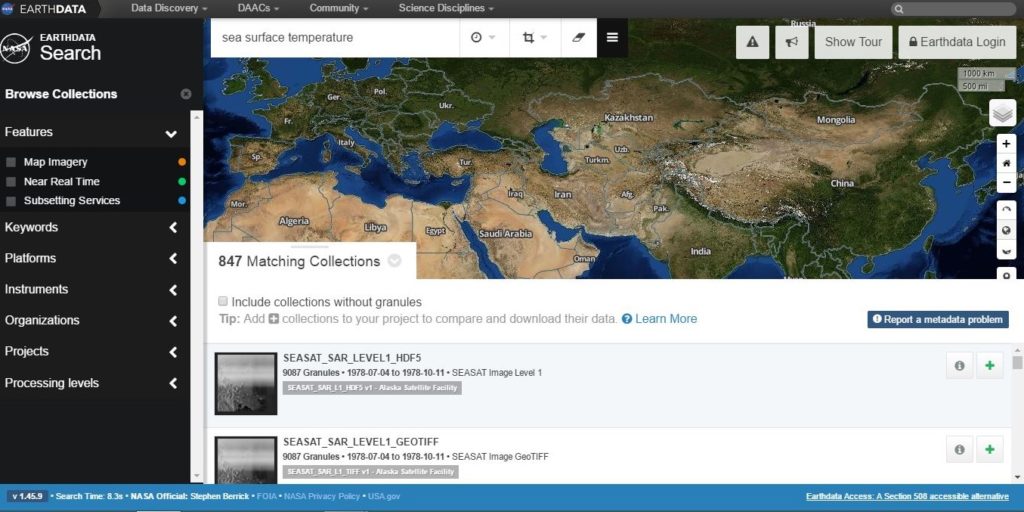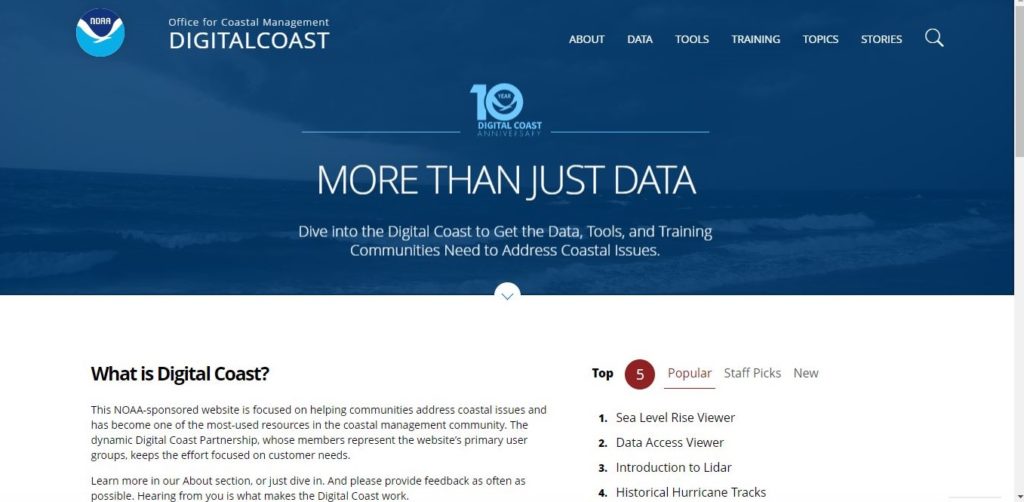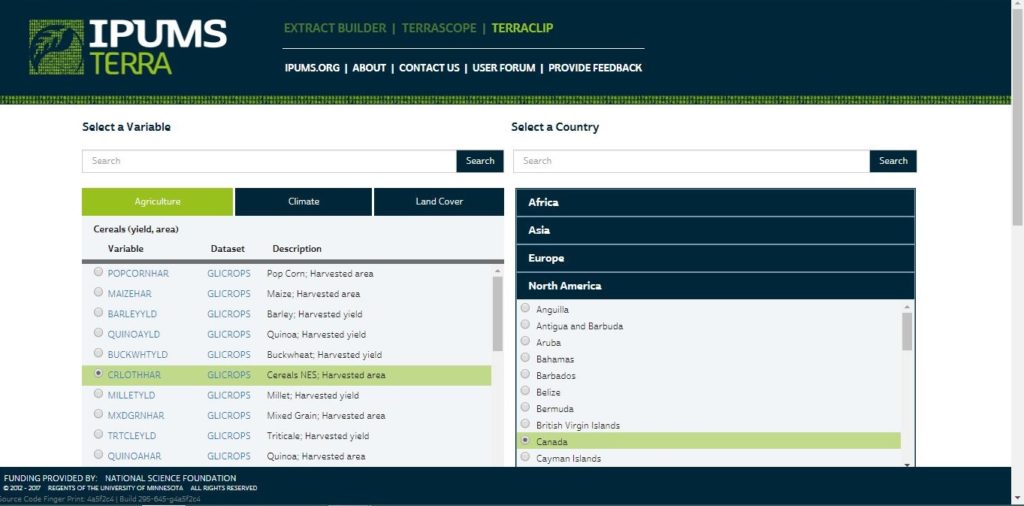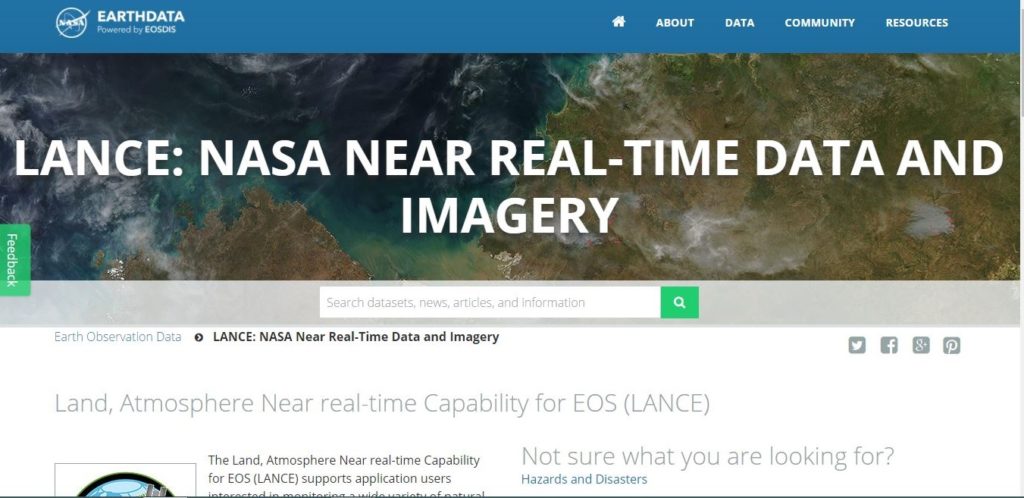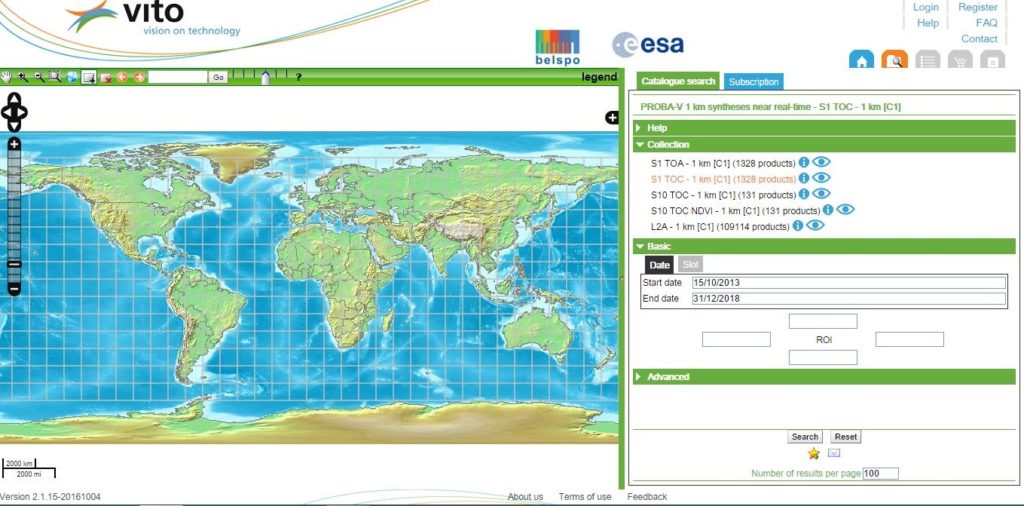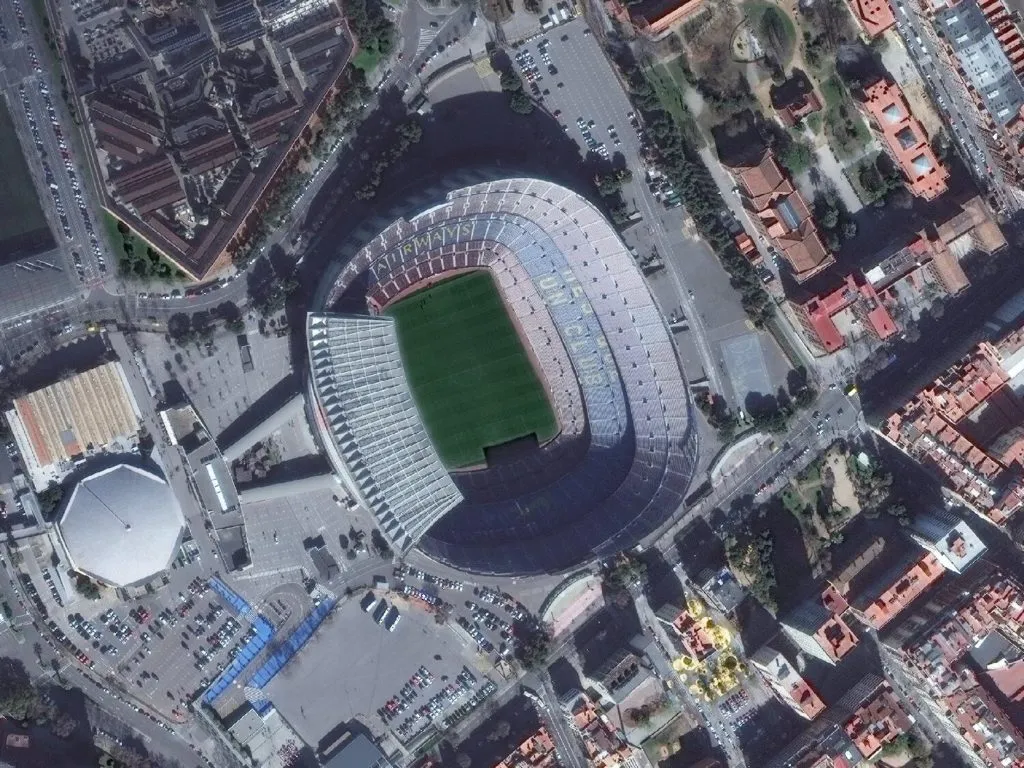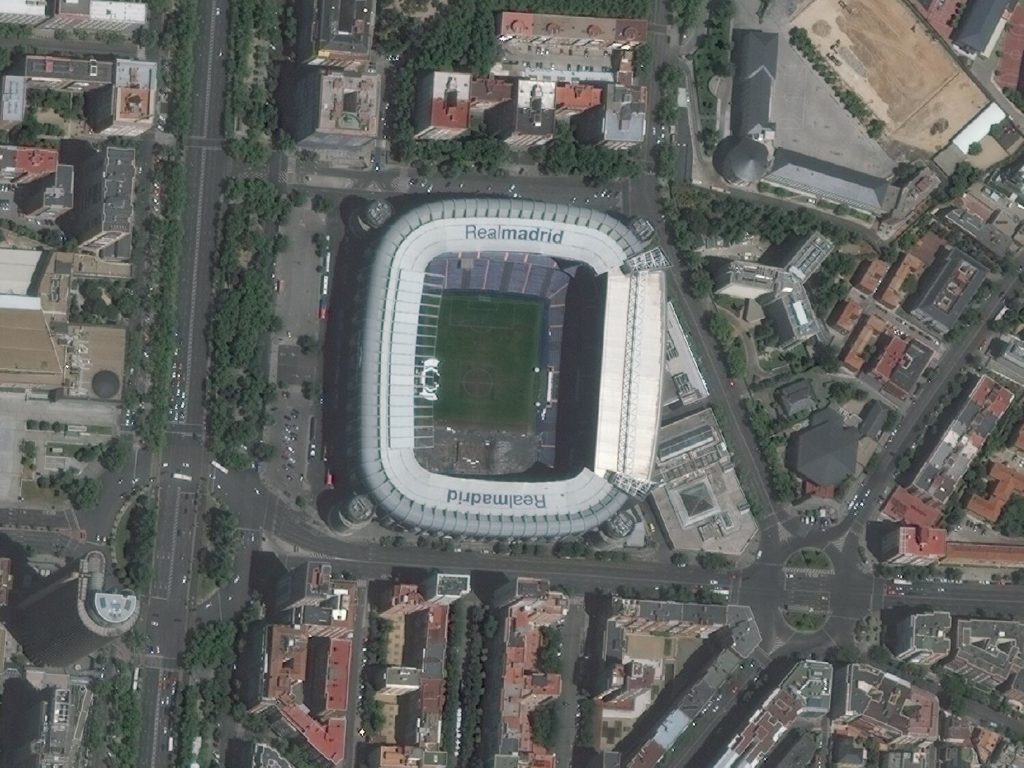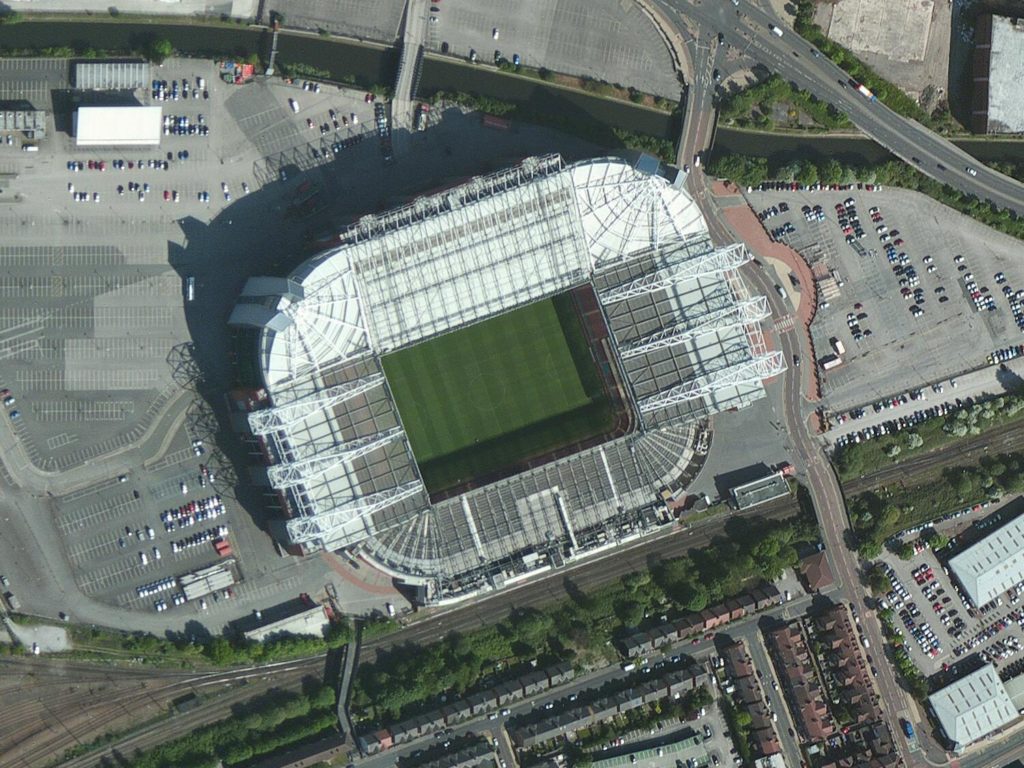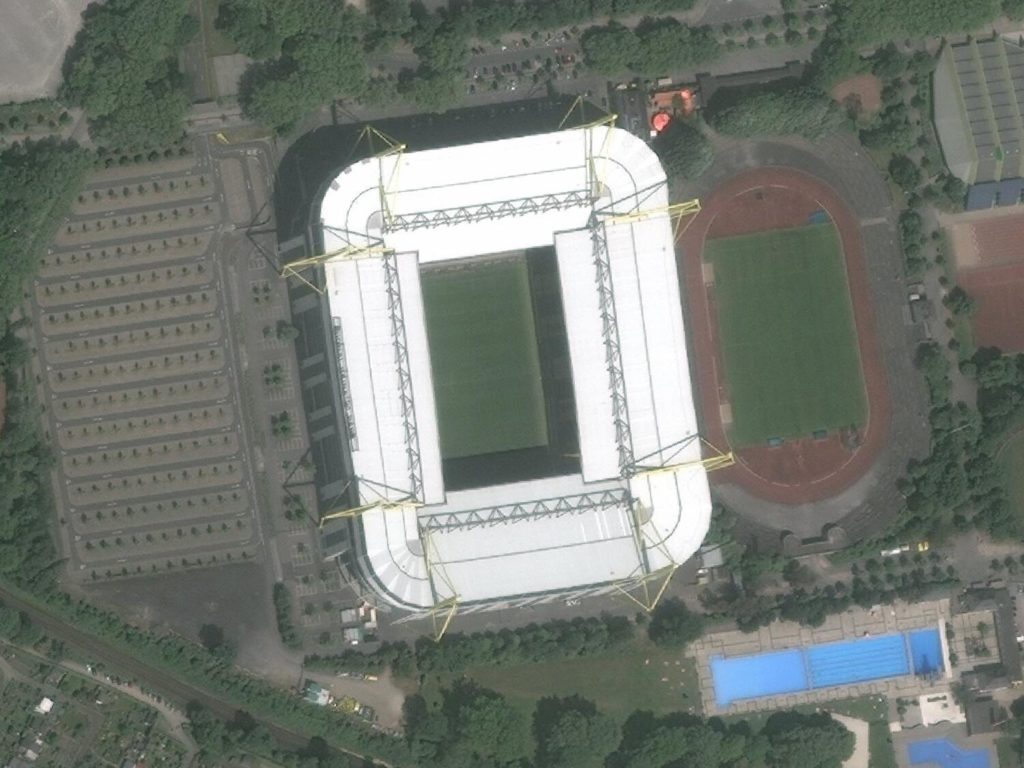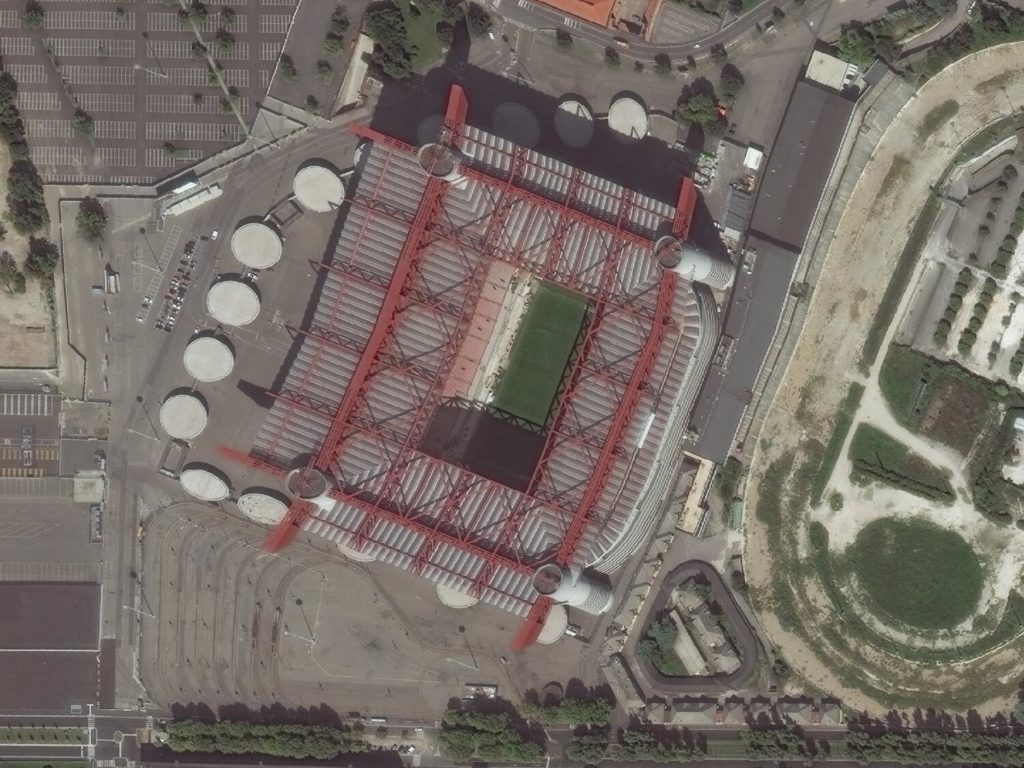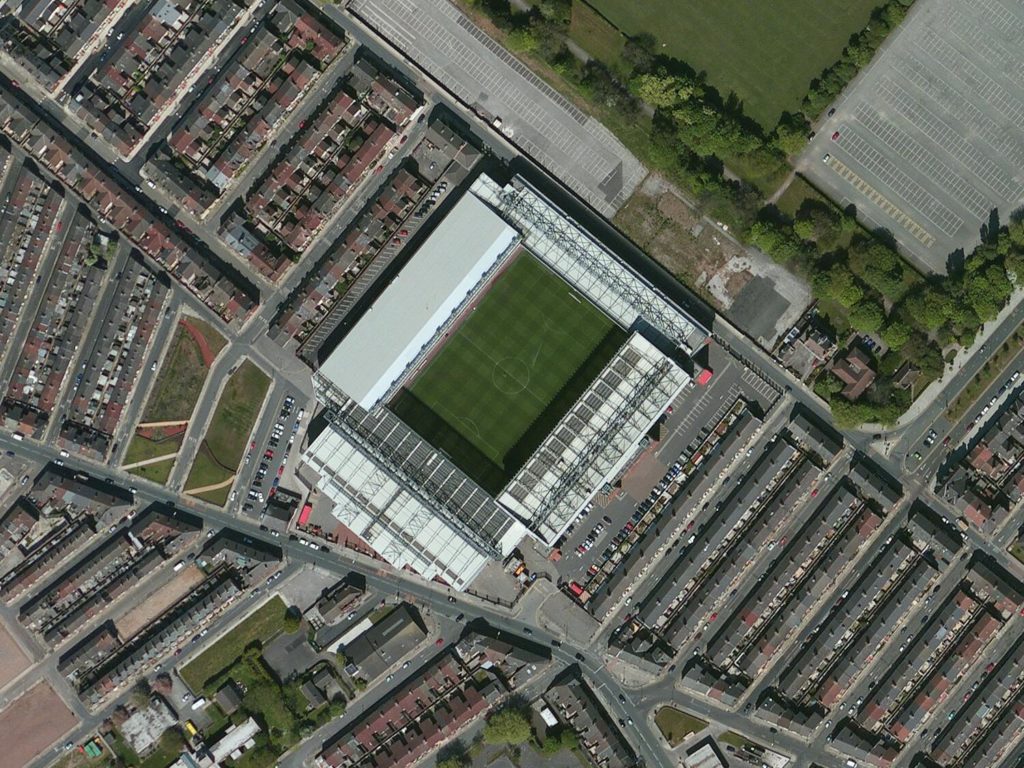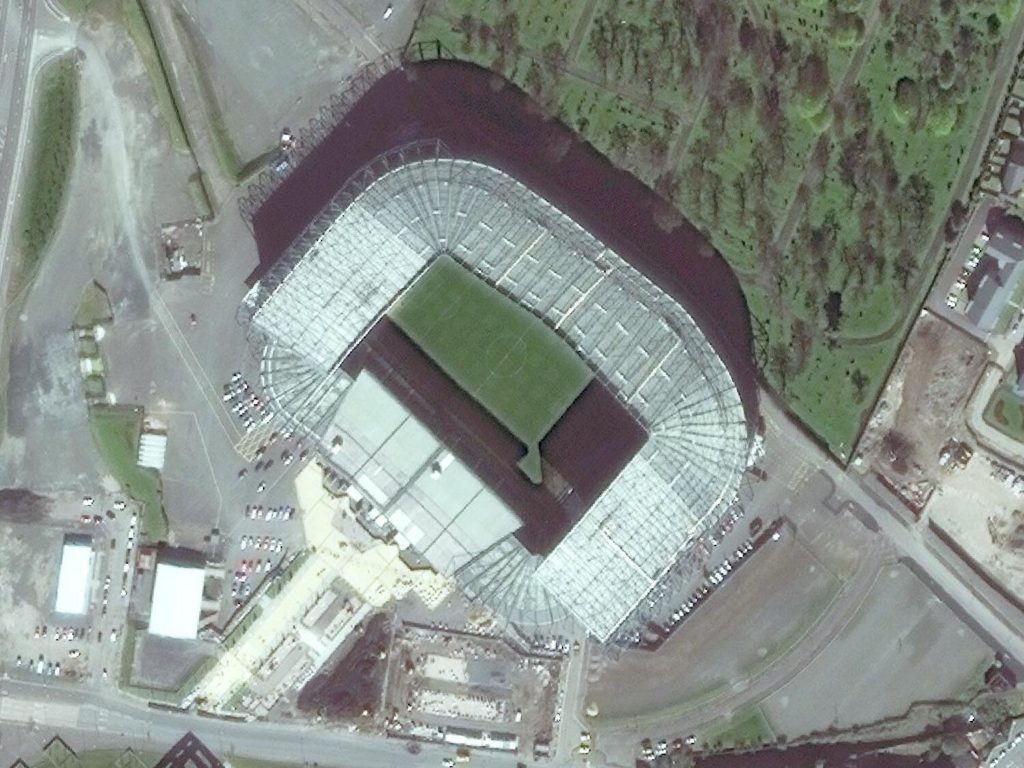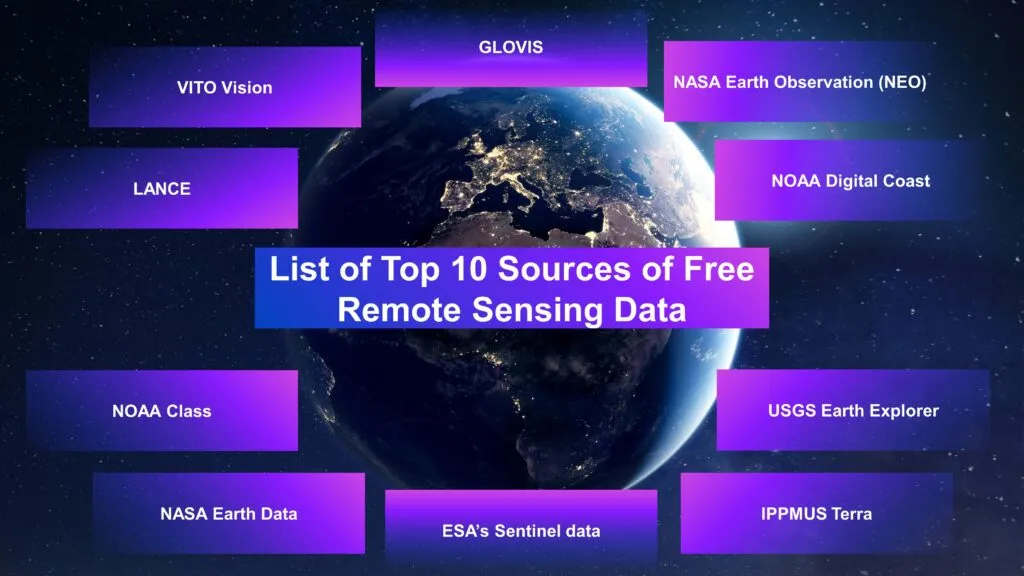
List of Top 10 Sources of Free Remote Sensing Data
The requirement for high quality remote sensing data is skyrocketing with the surge in the application of remote sensing techniques and with the ‘n’ number of researches carried out each day. Every remote sensing analysis revolves around the term DATA with specified resolution, location, sensor and above all it should be FREE OF COST. Here I have listed some of the top players providing Remote sensing data free of cost.
1. GLOVIS
The USGS Global Visualization Viewer (GloVis) is one of the quick and easy online search and order tool for selected satellite and aerial data, especially for beginners. The instruction for downloading data can be found here.
The products available for download are: Digital Orthophoto Quadrangle (DOQs), EO-1 ALI (Earth Observing-1 Advanced Land Imaging), EO-1 Hyperion (Earth Observing-1 Hyperion), Global Land Survey (GLS), Landsat 4-5 TM (L4-5 TM C1 Level-1), Landsat 7 ETM+ (L7 ETM+ C1 Level-1), Landsat 8 OLI/TIRS (L8 OLI/TIRS C1 Level-1), Sentinel-2, ISRO ResourceSAT 1 and 2 – AWIFS Sensor, ISRO ResourceSAT 1 and 2 – LISS-3 Sensor, GeoEye’s OrbView-3 (OrbView-3).
2. NASA Earth Observation (NEO)
NASA Earth Observation has more than 50 datasets on atmosphere, land, Ocean, energy, environment and much more on a daily, weekly and monthly frequency. The datasets are available in the form of JPEG, PNG, Google Earth and GeoTIFF.
3. USGS Earth Explorer
USGS Earth Explorer will stay the best portal for fetching Remote sensing data for a variety of reasons. Specially, a wide array of satellite and aerial images, a wide range of search criteria and the sequential arrangements of satellite imagery make the Earth Explorer a pro in terms of downloading imageries. USGS grants you full access to NASA’s Land Data Products and Services such as Hyperion’ s hyperspectral data, disperse Radar data and MODIS & AVHRR land surface reflectance.
4. ESA’s Sentinel data
The Copernicus Open Access Hub (previously known as Sentinels Scientific Data Hub) provides complete, free and open access to Sentinel-1, Sentinel-2 and Sentinel-3 user products, starting from the In-Orbit Commissioning Review (IOCR). The ESA’s sentinel data is chasing the USGS Earth Explorer with more bands and crisper resolution.
5. NASA Earth Data
With the retirement of the Reverb data search and discovery system on 1 January 2018, Earthdata Search will be the primary means for searching and discovering NASA Earth observing data. The result will be faster data searches and more relevant search results for EOSDIS data users. Earthdata Search uses Client’s natural language processing-enabled search tool to quickly narrow down to relevant collections as shown in the tutorial.
Similar to NASA Reverb, Earth Data communicates with a plethora of satellites such as NASA DC, GPS satellites, SMAP, JASON, METEOSAT, ALOS, TRMM, Aura, Aqua and much more.
6. NOAA Class
NOAA (National Oceanic and Atmospheric Administration) Class has a distinct online data library system, a pool of free top quality and valuable geographic data sets which set them apart. The Comprehensive Large Array- data Stewardship System (CLASS) is really in a class of its own with abundance of data accumulated from other rich and viable sources such as the US Department of Defense (DoD) Polar-orbiting Operational Environmental Satellite (POES) , Environmental Satellite (GOES) , NOAA’s Geostationary, Operational), and other derived data. However when compared to USGS, NOAA Class is still amateurish.
7. NOAA Digital Coast
If Coastal data is your only requirement, there is no better portal to reach than NOAA’s Digital Coast. Simply define your choice of interest and select from the range of free satellite imagery dataset such as infrared, radar and true colour composite to download. Apart from the coastal data you shall as well get imagery, land cover, elevation, socio-economic and benthic data.
8. IPPMUS Terra
IPUMS Terra integrates population census data from around the world with global environmental data, allowing users to obtain customized datasets that incorporate data from multiple sources in a single coherent structure. The country specific data can be obtained from Terraclip featuring MODIS data.
9. LANCE
The Land, Atmosphere Near real-time Capability for EOS (LANCE) supports application users interested in monitoring a wide variety of natural and man-made phenomena. Near Real-Time (NRT) data and imagery from the AIRS, AMSR2, MISR, MLS, MODIS, OMI and VIIRS instruments are available much quicker than routine processing allows. Most data products are available within 3 hours from satellite observation. NRT imagery are generally available 3-5 hours after observation.
10. VITO Vision
The VITO Vision provides coarse vegetation data from PROBA-V, SPOT-Vegetation and METOP. These coarse resolution satellites carves out vegetation patterns of the Earth’s surface. The easy-to-use interface and delivers free low resolution satellite data. This type of data is a good for large-scale applications that doesn’t need the finer details.
Every portal makes registration mandatory to download data. So register and download remote sensing data free of cost 🙂
Did you like the article? Read more and subscribe to our monthly newsletter!


